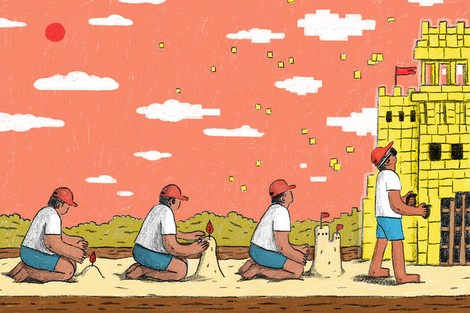Your podcast discovery platform
Curious minds select the most fascinating podcasts from around the world. Discover hand-piqd audio recommendations on your favorite topics.

piqer for: Health and Sanity Global finds
I was born in 1987 in Bucharest. I studied Psychology and Educational Sciences at the University of Bucharest. For two years I worked in a psychotherapy practice, dealing with gambling addicts. I'm an independent reporter, writing and doing video reportages mostly about social and political issues. I am currently based in Jena.
What You Get from Playing In The Sand
This article offers a history of the sandbox and its connections to child development.
Ever since they were first introduced to playgrounds — in 1885 by a group of female philanthropists to help immigrant children stay off the dangerous streets of Boston — sandboxes have been the place for children to make their own fun, to create societies and organize their world as they see fit.
Psychologist G. Stanley Hall, who studied child behaviour, observed two of his friends' boys while playing:
The first summer or two are for excavation and discovery, with primitive shelters made of propped-up boards and bricks. After a time of treating the sandpile like wilderness, the boys begin to introduce rural civilization. A knot of wood becomes a horse, men are whittled from sticks, and gradually hunting and gathering are replaced by agriculture, new farmhouses dwarfed by elaborate barns, miniature fields planted with real beans, wheat, oats, and corn. The sons of the A’s are joined by friends from other cottages, who build houses and barns of their own. Slowly they reinvent the plow and the wheel out of wood, wire, tin, and leather, then start stamping money out of felt.
What about the modern-day, technology savvy kids? Well, for them there's Minecraft, where "there is no preset narrative to force the player to run, hide, or shoot, and no marauders to destroy what she has built. Time is her own."
